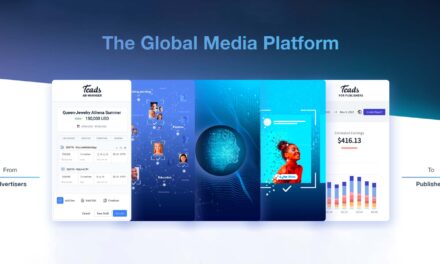How APAC marketers can harness AI automation to save time on routine tasks, allowing them to focus on enhancing creativity, deepening customer insights, and driving more strategic initiatives.
The Asia-Pacific (APAC) region stands at the forefront of digital innovation. For marketers in this dynamic region, AI automation is becoming an indispensable tool, not only streamlining operations but also opening new avenues for strategic creativity.
To explore how APAC marketers can best utilize the time saved by AI automation, we had an exclusive conversation with Nikhil Lai, Senior Analyst at Forrester, who shared his insights on the evolving landscape of AI in marketing.
Shifting the focus: From task management to strategic excellence
AI automation is rapidly changing the way marketers approach their day-to-day tasks. According to Nikhil Lai, within just a few months, Chief Marketing Officers (CMOs) are expected to transition commodified tasks like bid management and meta-tagging from human hands to AI-powered systems.
“This shift not only reduces human error but also compresses tasks that once took hours into mere minutes,” he explained. This newfound efficiency grants marketers the freedom to focus on more impactful aspects of their strategy, such as deepening brand loyalty and creating compelling content.

In the APAC region, where digital advertising is growing exponentially, this shift is particularly significant. With markets as diverse as China, India, and Southeast Asia, marketers face the challenge of catering to vastly different consumer behaviours and preferences. The time saved through AI automation allows them to delve deeper into understanding these nuances, crafting more personalized and resonant messages that speak directly to their target audiences.
Lai emphasized that one of the key ways to utilize this extra time is by practicing holistic search marketing. “Search marketers are now able to synergize paid and organic search, which demands exceptional cross-functional coordination and rigorous testing,” he noted.
By aligning paid search efforts with organic search strategies, marketers can create a more cohesive and effective approach to capturing consumer attention.
The Importance of High-Quality Data in AI-Driven Advertising
As AI tools become more integral to marketing strategies, the quality of data used to train these models becomes increasingly important. Lai highlighted that many brands are now building proprietary brand language models, which generate content and insights tailored to their specific needs. “The outputs of these models are only as good as the inputs, so brands should prioritize sourcing high-quality data,” he said.
For APAC marketers, this means tapping into zero-party data—a rich source of customer preferences that can be directly collected from consumers. This data can be used to train AI models to perform tasks such as auto-generating variations of ad creatives that have begun to lose their effectiveness. By keeping audience preferences at the forefront, brands can ensure that their AI-driven content remains relevant and engaging.
In addition to zero-party data, Lai points out that AI-integrated search engine results pages (SERPs) offer valuable opportunities to listen to customer voices. “These insights should dictate the language brands use to address customers,” he suggested.
In a region as diverse as APAC, where language and cultural nuances play a crucial role in consumer behaviour, leveraging AI to fine-tune messaging can significantly enhance brand resonance and effectiveness.
Balancing speed and control in AI-integrated advertising
While the benefits of AI in advertising are clear, Lai also warns of the potential risks associated with relying too heavily on these tools. “To capitalize on AI’s momentum, many vendors are developing black box solutions, such as AppLovin’s Axon 2.0, Google’s Performance Max, and Meta’s Advantage+,” he said.
These solutions are designed to handle tedious, predictable tasks like creative versioning and audience segmentation, allowing marketers to focus on higher-level decisions.
However, Lai cautions that while these tools can significantly enhance efficiency, they also pose risks to brand safety and campaign effectiveness. “Marketers should retain ownership of customer-facing decisions like creative direction and media strategy,” he advised. This balance between automation and human oversight is particularly important in the APAC region, where the stakes are high due to the diverse and highly competitive market landscape.
Furthermore, Lai highlights the role of generative AI (GenAI) in reducing the time required to identify winning variables, whether they are audiences or creative elements. “GenAI enables advertisers to do more with less while also bringing AI directly to consumers, creating more active advertising experiences,” he explained.
However, the rapid adoption of GenAI also presents challenges, as it forces creative directors and performance marketers to cede some control to semiautonomous machines.
In a market that may not be able to adapt quickly enough to these changes, the integration of GenAI can distort workflows and lead to potential risks such as regulatory non-compliance, reputational damage, and lost customer loyalty. “Marketers must carefully consider how much autonomy to afford AI, where to source quality data, and how to make the best use of the time AI saves,” Lai advised.
Strategic applications of time saved by AI
So, how can APAC marketers effectively use the time saved by AI automation? Lai offers several key strategies:
- Enhancing creativity and content: With more time on their hands, marketers can focus on creating high-quality, engaging content that resonates with their audience. This is particularly important in the APAC region, where cultural relevance and authenticity are key to building brand loyalty.
- Deepening customer insights: AI can handle the heavy lifting of data analysis, allowing marketers to spend more time interpreting the results and understanding their customers on a deeper level. This can lead to more personalized and effective marketing strategies.
- Improving cross-functional collaboration: The time saved by AI can also be used to foster better collaboration between different teams, such as marketing, sales, and product development. This can result in more cohesive and integrated marketing campaigns that drive better results.
- Investing in innovation: Finally, the extra bandwidth created by AI automation can be channeled into exploring new technologies and trends, such as the metaverse or blockchain, which are gaining traction in the APAC region.
Conclusion
AI automation is revolutionizing the marketing landscape in the APAC region, offering marketers unprecedented opportunities to enhance their strategies and drive better results. By leveraging the time saved through AI, marketers can focus on what truly matters—building strong, resonant brands that connect with consumers on a deeper level.
As Nikhil Lai’s insights reveal, the key to success lies in striking the right balance between automation and human oversight, ensuring that AI serves as a powerful tool for creativity and innovation rather than a replacement for it.


















